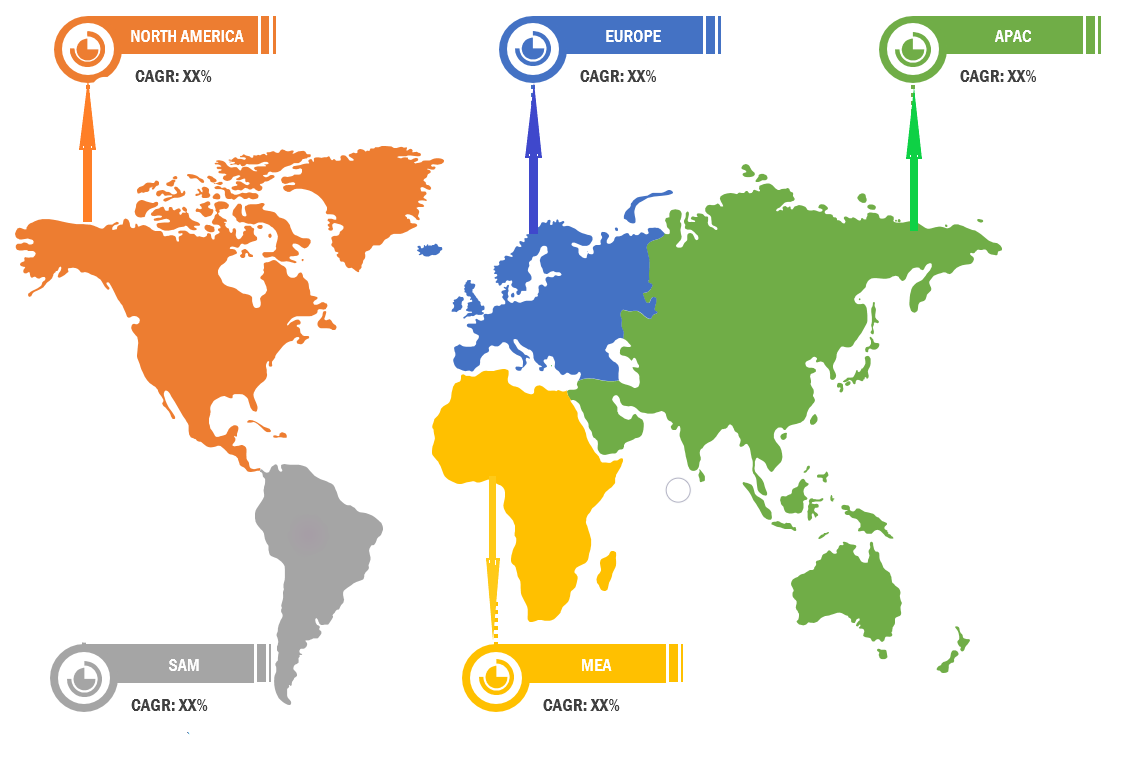Global Industrial Rubber Products market – Overview
- The report will cover the overall analysis and insights in relation to the size and growth rate of the “Global Industrial Rubber Products market ” by various segments at a global and regional level for the 2014-2027 period, with 2014-2019 as historical data, 2020 as a base year, 2021 as an estimated year and 2021-2027 as forecast period.
Global Industrial Rubber Products market – Introduction
- Industrial rubber is of two types, namely natural and synthetic. Natural rubber consists of polymers of organic compounds like isoprene obtained from latex, rubber trees and other plants. On the other hand, synthetic rubber is an elastomer developed by the polymerization of unsaturated hydrocarbons from petroleum byproducts manufactured in the petrochemical industry. The use of industrial rubber is dominated by one major product – tires. The global industrial rubber market is expected to witness significant growth due to a growing consumption of rubber in the tires manufacturing industry.
Report Includes
- The report provides a basic overview of the industry including definitions, classifications and industry chain structure.
- Description of properties and manufacturing processes.
- To analyze and forecast the market size in terms of volume and value
- Discussion of the current state, setbacks, innovations, and the future needs of the market.
- Detailed discussion regarding impact of product on demand
- Up-to-date analyses of market trends and technological improvements in the market
- Examination of the market by application and by product sizes; utility scale, medium scale and small scale.
- To strategically profile key players and comprehensively analyze their market rankings and core competencies
- The report focuses on detailed profile of major leading industry players with information such as company profiles, product picture and specification, capacity, production, price, cost, revenue and contact information.
- Coverage of historical overview, key industrial development and regulatory framework.
Global Industrial Rubber Products market Report Scope
- The scope of the report covers the clear understanding and overview of the product.
- Analysis of market trends in the region, with market data considering 2020 as the base year, 2021 as the estimate year and forecast for 2027 with projection of CAGR from 2021 to 2027.
- The report covers discussion of economic trends and technology.
- Market estimates represent revenue.
- In-depth analysis of the market segmentation assists in determining the prevailing market scope.
| Attribute | Details |
|---|---|
| Market size available for years | 2014–2027 |
| Base year considered | 2020 |
| Forecast period | 2021–2027 |
| Historical period | 2014-2019 |
| Forecast units | Value (USD) & Volume (Million Units) |
| Segmentation | By Regions North America, Europe, Asia Pacific, Latin America and Middle East & Africa |
| By Countries United States, Russia, China, Germany, United Kingdom, France, Japan, Israel, Saudi Arabia, South Korea, United Arab Emirates, Canada, Indonesia, Malaysia, Switzerland, Australia, India, Italy, Sweden, Spain, Belgium, Netherlands, Norway, Brazil, Argentina, Mexico, South Africa and 54 Others. |
|
| By Type Natural Rubber and Synthetic Rubber (Styrene Butadiene, Polybutadiene, Ethylene-Propylene, Nitrile and Others). |
|
| By Product Mechanical Rubber Goods, Rubber Hose & Belting, Rubber Roofing and Others. |
|
| By End-Use Automotive & Transportation, Building & Construction, Industrial Machinery & Equipment, Energy, Aerospace and Others. |
|
| Companies covered | Airboss of America Corp.; Avon Rubber p.l.c.; Bando Chemical Industries, Ltd.; Bridgestone Corporation; Continental AG; Cooper Standard; Carlisle Companies Inc.; Dayco Products, LLC; Eaton Corporation; EnPro Industries, Inc.; Federal-Mogul Corporation; Gates Corporation; Goodyear Tire and Rubber Company; Habasit AG; Hutchinson S.A.; JSJ Corporation; LANXESS; Meiji Rubber & Chemical Co., Ltd.; Mitsuboshi Belting Ltd.; Nichirin Co., Ltd.; NOK Corporation; Parker Hannifin Corporation; Patch Rubber Company; Sparks Belting Company; Sinopec; Semperit AG Holding; Sumitomo Riko Company Limited; Sumitomo Rubber Industries Ltd.; The Freudenberg Group; The Yokohama Rubber Company Ltd.; Toyo Tire Corporation; Toyoda Gosei Company Limited; Trelleborg AB; TSRC Corporation; Versalis S.p.A. and Others. |
Segments Covered in Global Industrial Rubber Products market
- The global Industrial Rubber Products market is divided into different segments on the basis of types, product, end-users and region. The industrial valves market segment on the basis of product includes Mechanical Rubber Goods, Rubber Hose & Belting, Rubber Roofing and others. On the basis of types, the Industrial Rubber Products market segment comprises a Natural Rubber and Synthetic Rubber (Styrene Butadiene, Polybutadiene, Ethylene-Propylene, Nitrile and Others). The global Industrial Rubber Products market segment by the end-users involves Automotive & Transportation, Building & Construction, Industrial Machinery & Equipment, Energy, Aerospace and many other sectors.
- The global Industrial Rubber Products market segment on the basis of region includes Europe, Asia-Pacific, North America, and other parts of the world.
- APEJ has a significant contribution in the global industrial rubber market. It is a leading region in terms of production and consumption of rubber. An emerging trend in APEJ is to manufacture motorcycle and bicycle tires. In addition, many stakeholders are exhibiting interest in the manufacture of car and truck tires and this segment is forecasted to overtake the manufacturing of bicycle and motorcycle tire business in the region.
COVID 19 Impacts on Global Industrial Rubber Products
COVID-19 is a new strain of coronavirus that has not been previously identified in humans . Coronaviruses (CoV) are a family of RNA (ribonucleic acid) viruses. COVID-19 started in Asia and is now spreading over the rest of the world via person-to-person contact and community spread. COVID-19 pandemic may have an potential impacts on Global Industrial Rubber Products Market.
Recent Developments in Global Industrial Rubber Products market
- On April 10, 2019, Bridgestone Corporation’s Australian subsidiary, i.e. Bridgestone Mining Solutions Australia Pty. Ltd., established the Hunter Valley Mining Solution Center. The subsidiary sells and provides services pertaining to tires used in mining vehicles and conveyor belts.
- On June 19, 2018, The Goodyear Tire & Rubber Company and Bridgestone Americas, Inc. jointly formed TireHub LLC, a joint venture for the distribution of passenger vehicle and light truck tires. TireHub LLC would be providing tire dealers and retailers in the U.S. with a wide range of passenger vehicle and light truck tires.
- The Goodyear Tire & Rubber Company focuses on expanding its presence in emerging markets across the globe. In November 2016, the company expanded its tire factory in Pulandian, China. This expansion aims to increase the capacity of the factory by approximately 5 million tires a year. The new plant is expected to be operational by 2020.
Key Market Players in Global Industrial Rubber Products market
- The major players in the Global Industrial Rubber Products market are Airboss of America Corp.; Avon Rubber p.l.c.; Bando Chemical Industries, Ltd.; Bridgestone Corporation; Continental AG; Cooper Standard; Carlisle Companies Inc.; Dayco Products, LLC; Eaton Corporation; EnPro Industries, Inc.; Federal-Mogul Corporation; Gates Corporation; Goodyear Tire and Rubber Company; Habasit AG; Hutchinson S.A.; JSJ Corporation; LANXESS; Meiji Rubber & Chemical Co., Ltd.; Mitsuboshi Belting Ltd.; Nichirin Co., Ltd.; NOK Corporation; Parker Hannifin Corporation; Patch Rubber Company; Sparks Belting Company; Sinopec; Semperit AG Holding; Sumitomo Riko Company Limited; Sumitomo Rubber Industries Ltd.; The Freudenberg Group; The Yokohama Rubber Company Ltd.; Toyo Tire Corporation; Toyoda Gosei Company Limited; Trelleborg AB; TSRC Corporation; Versalis S.p.A. and Others.
- Also, the Industrial Rubber Products market analysis report includes information on upcoming trends and challenges that will influence market growth. This is to help companies strategize and leverage all forthcoming growth opportunities.
Objectives of the Global Industrial Rubber Products market Study
- To provide detailed information regarding drivers, restraints, opportunities and challenges are influencing the growth in the Global Industrial Rubber Products market.
- To analyze the competitive intelligence of players based on company profiles and their key growth strategies.
- To strategically analyze micro markets with respect to the individual growth trends, their prospects, and their contribution to the total Global Industrial Rubber Products market.
- To analyze competitive developments such as expansions, and product launches, along with research & development (R&D) activities undertaken in the Global Industrial Rubber Products market.
- A unique model is created customized for each study also offers suggestions that help enterprises to identify and mitigate risks.
Note –
- Global Industry Reports will also support you post-purchase for a period of 6 months to answer any of your queries related to the following market and to provide you any more data if you need, for your analysis.
- Also, you can buy some selected Chapters from the report.











